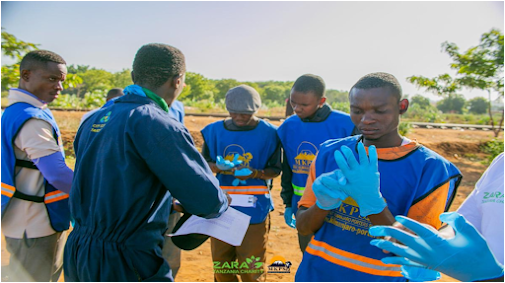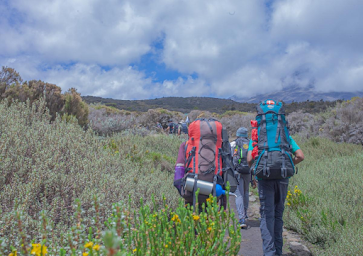FREQUENTLY ASKED QUESTIONG ABOUT CLIMBING MOUNT KILIMANJARO
Where is Kilimanjaro?
- What are important details about Kilimanjaro?
- How high is Mount Kilimanjaro? -
What experience do I need to climb Mount Kilimanjaro?
- What gear do I need to climb Mount Kilimanjaro??
- Can I shower when climbing Mount Kilimanjaro?
- How long does it take to climb Mount Kilimanjaro?
- What will I eat when climbing Mount Kilimanjaro? I am vegetarian.
- Where does the water come from on Mount Kilimanjaro?
- Do we sleep in hotels when climbing Mount Kilimanjaro?
- What dangers are there on Mount Kilimanjaro?
- Do we tip the crew hiking with us on Mount Kilimanjaro?
- How old should I be to make it to the top of Mount Kilimanjaro?
- Will I make it to the top of Uhuru peak?
- How hard is climbing Kilimanjaro?
- What is the hardest part of climbing Kilimanjaro?
- Which route is easier to climb Kilimanjaro?
- Which route is the hardest to climb Kilimanjaro?
- Which is the best month to climb Kilimanjaro?
- What is the best age to climb Kilimanjaro?
- What are rules for climbing Kilimanjaro?
ANSWERS TO THE FREQUENTLY ASKED QUESTIONS ABOUT CLIMBING MOUNT KILIMANJARO
Mount Kilimanjaro, located in northeastern Tanzania near the border with Kenya, is a majestic peak that attracts adventurers from around the world. If you're considering embarking on this incredible journey, you probably have many questions. In this comprehensive guide, we'll answer the most frequently asked questions about climbing Mount Kilimanjaro, providing you with detailed information to help you prepare for this awe-inspiring experience.
Where is Kilimanjaro?
Mount Kilimanjaro is located within Kilimanjaro National Park in Tanzania, East Africa. It is situated approximately 200 miles south of the equator and stands tall as the highest freestanding mountain in the world.
What are important details about Kilimanjaro?
Mount Kilimanjaro is a dormant stratovolcano consisting of three volcanic cones: Kibo, Mawenzi, and Shira. Kibo is the highest cone and houses Uhuru Peak, which is the ultimate goal for most climbers. The mountain is renowned for its diverse ecosystems, including lush rainforests, alpine meadows, and barren landscapes near the summit.
How high is Mount Kilimanjaro?
Standing at an impressive height of 5,895 meters (19,341 feet) above sea level, Mount Kilimanjaro is the tallest peak in Africa. Its elevation and proximity to the equator contribute to its unique climate and stunning views.
What experience do I need to climb Mount Kilimanjaro?
Climbing Mount Kilimanjaro does not require technical mountaineering skills. However, it is a strenuous trek that demands physical fitness, mental resilience, andthe ability to acclimatize to high altitudes. Prior hiking experience, especially at elevations above 4,000 meters (13,000 feet), is beneficial but not mandatory.
What gear do I need to climb Mount Kilimanjaro?
Proper gear is essential for a successful climb. Some crucial items include sturdy hiking boots, warm and moisture-wicking clothing, waterproof outer layers, a backpack, a sleeping bag suitable for cold temperatures, trekking poles, a headlamp, sunglasses, and a wide-brimmed hat. Additionally, you should bring sunscreen, gloves, thermal layers, and a water bottle.
Can I shower when climbing Mount Kilimanjaro?
While there are no shower facilities on the mountain, some climbing routes offer limited opportunities for a basic wash with warm water. These are often available at designated campsites, and climbers can use a small bucket or basin for washing. However, it's important to conserve water during the climb, so showers are not a regular occurrence.
How long does it take to climb Mount Kilimanjaro?
The duration of the climb varies depending on the chosen route. Most climbers take between 5 and 8 days to reach the summit and descend. A longer duration allows for better acclimatization, increasing the chances of a successful summit attempt. It's important to choose a route that suits your fitness level and time constraints.
What will I eat when climbing Mount Kilimanjaro?
I am vegetarian. During the climb, a team of experienced porters and cooks will prepare meals for you. They can accommodate various dietary requirements, including vegetarian options. The menu typically includes a variety of dishes like soups, pasta, rice, vegetables, fresh fruit, and snacks. It's recommended to inform your tour operator about your dietary preferences in advance to ensure proper arrangements.
Where does the water come from on Mount Kilimanjaro?
Water sources on Mount Kilimanjaro include streams, rivers, and glacier meltwater. The climbing team will provide treated water for drinking and cooking. You can also bring water purification tablets or a filtration system to make water from natural sources safe to drink.
Do we sleep in hotels when climbing Mount Kilimanjaro?
While hotels are not available on the mountain, climbers stay in mountain huts or tents at designated campsites along the chosen route. These accommodations provide basic shelter and facilities to rest and recharge. The quality of facilities varies depending on the route and the level of comfort you choose.
What dangers are there on Mount Kilimanjaro?
Altitude sickness is the primary concern on Kilimanjaro. As you ascend, the decreasing oxygen levels can lead to symptoms such as headaches, nausea, and fatigue. It's crucial to acclimatize properly, stay hydrated, and listen to your body. Other potential risks include extreme weather conditions, exhaustion, and injuries from falls. Hiring experienced guides and following their instructions mitigates these dangers.
Do we tip the crew hiking with us on Mount Kilimanjaro?
Tipping the climbing crew is customary on Kilimanjaro as it recognizes their hard work and support during the climb. While tipping amounts may vary, it's generally recommended to allocate around 10-15% of the total climb cost for tipping the crew. Your tour operator can provide guidance on tipping etiquette.
How old should I be to make it to the top of Mount Kilimanjaro?
There is no specific age requirement to climb Kilimanjaro, but it's important to consider physical fitness, maturity, and altitude tolerance. Younger climbers should be accompanied by adults, and individuals of all ages must have a reasonable level of fitness and endurance. Consulting with a medical professional before the climb is advisable, especially for older climbers or those with pre-existing health conditions.
Will I make it to the top of Uhuru Peak?
Reaching Uhuru Peak, the summit of Kilimanjaro, depends on several factors including your physical fitness, proper acclimatization, and mental determination. With the right preparation, guidance, and perseverance, many climbers successfully make it to the top. However, it's important to remember that not everyone reaches the summit, and personal safety should always be the top priority.
How hard is climbing Kilimanjaro?
Climbing Kilimanjaro is physically and mentally demanding. The altitude, steep inclines, and unpredictable weather conditions pose challenges. Adequate training, preparation, and a positive mindset are essential for a successful climb. Regular cardiovascular exercise, strength training, and hiking at high altitudes can help build the required fitness level.
What is the hardest part of climbing Kilimanjaro?
The most challenging aspect of climbing Kilimanjaro is often the altitude. As you ascend, the decreasing oxygen levels can lead to symptoms of altitude sickness, such as dizziness and fatigue. Proper acclimatization, hydration, and a gradual pace can help minimize these difficulties. The final push to the summit, which usually begins in the early hours of the morning, can also be mentally and physically demanding.
Which route is easier to climb Kilimanjaro?
The easiest route to climb Kilimanjaro is often considered to be the Marangu Route, also known as the "Coca-Cola" route. It features gentle slopes and more comfortable accommodations in mountain huts. However, it's important to note that no route is easy, and each has its own unique challenges. Other popular routes like the Machame and Lemosho routes offer more scenic views and higher summit success rates but involve steeper sections.
Which route is the hardest to climb Kilimanjaro?
The most challenging route to climb Kilimanjaro is often regarded as the Western Breach Route. This route involves steep inclines, rugged terrain, and requires technical skills in some sections. It is suitable for experienced climbers seeking a more adventurous and demanding ascent. It's important to note that this route carries additional risks and may require additional equipment and experience.
Which is the best month to climb Kilimanjaro?
The best time to climb Kilimanjaro is during the dry seasons, which are generally from January to mid-March and from June to October. These months offer more stable weather conditions, lower precipitation, and better visibility, increasing the chances of a successful summit. However, it's important to note that weather patterns can vary, and you should check with your tour operator for the most up-todate information.
What is the best age to climb Kilimanjaro?
There is no specific age that determines the best time to climb Kilimanjaro. However, individuals in good health and with adequate fitness levels can attempt the climb at any age. It's important to consult with a medical professional and consider your personal abilities and limitations. Children under the age of 10 are generally not recommended to climb to the summit due to the challenges posed by altitude and physical exertion.
What are the rules for climbing Kilimanjaro?
While specific regulations may vary, some common rules include obtaining permits from Kilimanjaro National Park, hiking with a licensed guide or tour operator, respecting the environment by adhering to the "Leave No Trace" principles, and following the instructions and guidance of the climbing team to ensure a safe and enjoyable climb. It's essential to be aware of and comply with the rules and regulations set by the national park authorities to protect the mountain and preserve its natural beauty for future generations. Embarking on a journey to climb Mount Kilimanjaro is an incredible adventure that requires preparation, determination, and a sense of wonder. By understanding these frequently asked questions and their detailed answers, you'll be better equipped to plan and experience a successful ascent of this iconic peak. Remember, climbing Kilimanjaro is not just about reaching the summit but also about embracing the journey and the remarkable natural beauty that surrounds you.


Comments
Post a Comment